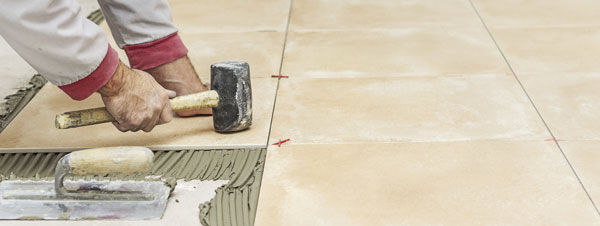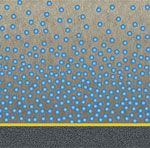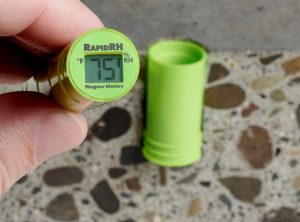8 Truths about Concrete Moisture that No GC Can Ignore

Written by Wagner Meters. A shortened version published first in Tile Magazine (Jan/Feb 2015 Issue)
Can you handle the truth? What every general contractor must know about concrete in order to make solid decisions about when to finish a floor.
How often do you work on a project where concrete is poured? Concrete floors are everywhere. Their durability, strength, and visual appeal make them a popular choice. Unfortunately, that popularity comes with millions of dollars in moisture-related damage every year. Why? Because there are some simple truths about moisture in concrete that many general contractors ignore.
As a GC, it is extremely important to have a solid understanding of concrete moisture and how concrete dries. Otherwise, how do you know the right call is being made about when it’s appropriate to finish the floor? Regardless of whether you end up moving too fast or too slow with the flooring installation, the consequences are serious. You might find yourself falling behind schedule or going over budget, not to mention facing ugly and dangerous flooring failures.
 The most critical piece of information you need regarding if the floor can be finished is the moisture condition of the concrete. Proper testing is the only way to know if the concrete slab is dry enough to accept the flooring. Testing also helps you stay in control of your budget and your schedule, and it minimizes the potential for moisture-related failures
The most critical piece of information you need regarding if the floor can be finished is the moisture condition of the concrete. Proper testing is the only way to know if the concrete slab is dry enough to accept the flooring. Testing also helps you stay in control of your budget and your schedule, and it minimizes the potential for moisture-related failures
For proper concrete moisture testing, here are the eight simple truths every GC must know:
1. What are the acceptable moisture levels in concrete?
Acceptable moisture levels in concrete according to ASTM standard, when testing via ASTM F2170, the RH level of a concrete slab needs to be at or below 75% — unless the flooring system manufacturer provides alternate guidelines. Some flooring system manufacturers have products that can handle 95% RH or more.
2. How moisture gets into concrete
Every slab of concrete has moisture and will always have moisture. So you’re never going to achieve, nor would you want, 100 percent dry concrete. What you’re looking for is moisture condition that’s within manufacturer’s specifications to accept the flooring product you are going to apply.
Moisture sources for concrete are both internal and external. The internal source of moisture is the water mixed with cement that created the concrete. The ratio of water to cement in your batch of concrete remains one of the most influential factors as to how long a concrete slab needs to cure and dry. External sources of concrete moisture can also be substantial and include such things as rainwater, poor plumbing, poor drainage below or at the sides of the slab, and even the humidity in the air.
Whatever the source, once the concrete slab is poured and cured, it needs enough time for the excess moisture within it to evaporate. If the flooring product or coating is applied while the concrete retains excess moisture, that’s when you can expect flooring adhesive failures, efflorescence, or other types of moisture-related damage.
3. How moisture moves through concrete
During the drying process, the concrete batch water, cement, aggregate, and other admixtures create tiny pathways within called capillaries. Once cured, the excess water in the slab moves through these capillaries to release the moisture. Since most concrete floors have a vapor retarder below them, this moisture must move upwards in order to escape.
The significant movement of water within the slab means that the moisture condition will vary by depth. Generally, the surface of the slab is drier, while deeper in the concrete, the moisture concentration is higher.
One more important note: Moisture doesn’t just flow out of a slab. The flow of moisture is actually a two-way street. External sources of water present during the drying process can significantly affect the moisture condition of the slab. The capillaries in the concrete act like a sponge that can soak up direct water sources.
In addition, when the humidity of the air outside the slab is high, the concrete can start absorbing moisture instead of releasing it or it can impede the drying process altogether.
4. The critical point when the moisture stops moving
In truth, moisture never stops moving in concrete. It will always react relative to its environment. However, it does reach a point of equilibrium once the slab is sealed.
Just as a vapor retarder beneath the concrete stops moisture from escaping through the bottom of the slab, a floor installation restricts the flow of moisture evaporating at the top surface. The outcome of closing off both routes of evaporation is that the remaining moisture will spread out more or less evenly throughout the slab.
The resulting point of equilibrium is critical to your decision-making because this is the moisture condition that the flooring adhesive and finish must accommodate over the long term. If the expected point of equilibrium isn’t appropriate for the project’s specific flooring application, there is an increased risk of a significant flooring failure.
5. The moisture isn’t going to move any faster than it wants to
The common wisdom of how long it takes concrete to dry is 30 days per inch of slab depth. However, you’ve already seen that numerous factors affect how much time a concrete slab needs to dry. In addition to internal and external water sources, other environmental conditions, such as ambient temperature and air circulation, impact drying time.
 It’s increasingly common to use special products or processes to speed up the drying process. Reducing the water-to-cement ratio, using self-desiccant products, and controlling the ambient conditions are all tricks intended to reduce either the volume of moisture present or the time needed to dry the slab. If any of these products or processes aren’t applied correctly, they may lead to more problems than they were intended to fix.
It’s increasingly common to use special products or processes to speed up the drying process. Reducing the water-to-cement ratio, using self-desiccant products, and controlling the ambient conditions are all tricks intended to reduce either the volume of moisture present or the time needed to dry the slab. If any of these products or processes aren’t applied correctly, they may lead to more problems than they were intended to fix.
Certain mechanical processes used to lay the concrete may also affect drying time by blocking the pathways within the concrete needed to release moisture. For example, too much troweling, or using a surface curing compound, may create impediments to the capillaries, slowing the release of moisture and increasing the drying time.
While the 30-day-per-inch wisdom may be common, don’t rely on it. The specifications and environmental conditions of each project are unique. Therefore, this rule of thumb is never enough to give you a solid, quantitative basis for making your decision about when the floor is ready to be finished.
6. The target point of equilibrium is specific to your project
The first five truths about concrete all lead to this next important truth: You and your trade specialists must know what point of equilibrium is right for the specific flooring finish that you will apply on top of the slab. The manufacturers of each flooring product have developed recommendations based on the moisture tolerance of their specific products.
The levels of moisture in the slab at present and at the expected point of equilibrium are the ultimate guidelines that you must rely on when you decide if the concrete is ready to move to the next phase.
7. You can’t know what you don’t measure
Unless you properly measure the moisture condition of a slab before the flooring installation, you can’t possibly know whether the slab is ready. Several methods for concrete moisture testing are in use today, but not all are accurate or reliable. In the United States, two test methods are most commonly used and are described here.
The first is the anhydrous calcium chloride test, also known as the CaCl test, which is addressed within
ASTM F1869. It is conducted by placing a desiccant material on top of the slab and sealing it with a cover to block any influence from the surroundings. The material is weighed 60-72 hours later on the assumption that any increase in weight of the CaCl crystals translates into the “moisture vapor emission rate”, or MVER, of the slab.
 In contrast, the ASTM F2710 in-situ RH test uses probes to measure the RH at a specific depth within the concrete – 40% of the slab’s thickness for a slab drying from one side or 20% for a slab drying from two sides. Scientific research examining the reliability of the in situ probe RH test has determined that, at these depths, the readings will most reliably predict the slab’s point of equilibrium, and therefore the true moisture condition that will exist after the flooring installation.
In contrast, the ASTM F2710 in-situ RH test uses probes to measure the RH at a specific depth within the concrete – 40% of the slab’s thickness for a slab drying from one side or 20% for a slab drying from two sides. Scientific research examining the reliability of the in situ probe RH test has determined that, at these depths, the readings will most reliably predict the slab’s point of equilibrium, and therefore the true moisture condition that will exist after the flooring installation.
8. Surface moisture is misleading
The key, of course, is properly measuring the moisture condition of the slab. Based on what we know about how a slab dries, including the movement of moisture within the slab, it’s important to collect data that accurately predicts the point of equilibrium after the flooring installation. Only the ASTM F2170 in-situ probe concrete RH test has been scientifically proven to provide this information.
You see, the CaCl test and most other concrete moisture testing procedures employ methods such as the plastic sheet application, only measure moisture escaping from the surface of the concrete slab. Since we know that moisture within a slab varies by depth, any moisture test that only measures moisture at the surface can’t give you consistently reliable, usable results. In fact, the chances are quite high that the results will be misleading as to the overall moisture condition of the slab. Today, ASTM International no longer permits use of the CaCl test for lightweight concrete applications.
A lot of truth – one conclusion
You’re in control of moving the construction project forward, and it’s your reputation on the line if bad decisions are made. Given the realities of moisture in concrete and the necessity of measuring the moisture condition of the concrete slab accurately, only one clear conclusion exists: ASTM F2170 in-situ RH testing will give you the most reliable information to help you manage your flooring project successfully.
RH testing has been validated by scientific research and field experience. Time and again, it has been proven to offer reliable, actionable guidance to general contractors and trade specialists. Reliable test results lead to more confident decision making and ultimately, to the outcome you seek – quality flooring, installed on time and on budget, that stands the test of time.
Learn how to use the DataGrabber for easy concrete moisture testing.